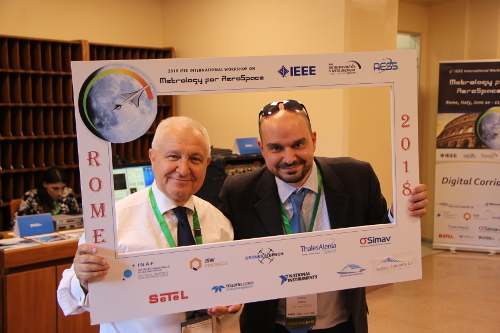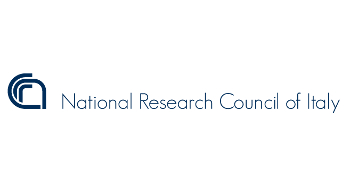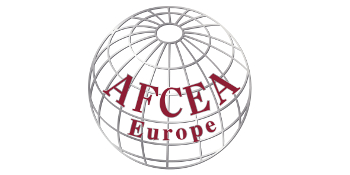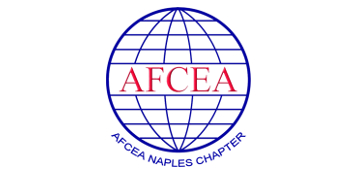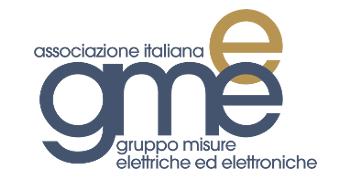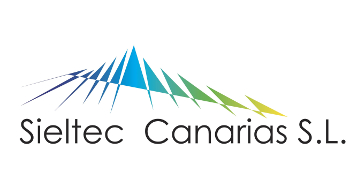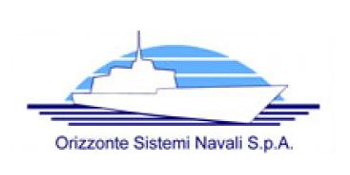MetroAeroSpace 2018 will be hosting a series of tutorials in the area of instrumentation and measurement for aerospace, and proposals are invited from industrial and research community.
SESSION 1 - Introduction to Metamaterials
Vincenzo Galdi
University of Sannio, Italy
Metamaterials are artificial composites that are engineered to exhibit material properties that are not otherwise attainable with ordinary materials. This research field has seen a tremendous growth in recent years, driven by the ability to induce anomalous physical responses and effects not otherwise observable in nature.
This tutorial will present, at an introductory level, a broad overview of results in the field of metamaterials. More specifically, after introducing some basic concepts and the most celebrated examples of metamaterial-induced anomalous light-matter interactions, possible practical applications, as well extensions to other wave-based (e.g., acoustic, elastic) and diffusive (e.g., heat) phenomena, will be showcased.
 Vincenzo Galdi received the Laurea degree (summa cum laude) in electrical engineering and the Ph.D. degree in applied electromagnetics from the University of Salerno, Italy, in 1995 and 1999, respectively.
Vincenzo Galdi received the Laurea degree (summa cum laude) in electrical engineering and the Ph.D. degree in applied electromagnetics from the University of Salerno, Italy, in 1995 and 1999, respectively.
In 2002, he was appointed Associate Professor of Electromagnetics, and joined the Department of Engineering at the University of Sannio, Benevento, Italy, where is currently working. He has served as Associate Chair for Undergraduate Studies in Telecommunication Engineering (2005-2010). In 2014, he received the National Scientific Qualification as a Full Professor.
He has held several visiting positions at abroad research institutions, including the European Space Research and Technology Centre (Noordwijk, NL), Boston University, Massachusetts Institute of Technology, and California Institute of Technology.
He has co-edited two books, and co-authored over 120 papers in peer-reviewed international journals, 7 book chapters, and 145 conference papers (50 invited).
He is currently serving as a Track Editor of the IEEE Transactions on Antennas and Propagation, an Associate Editor of Heliyon and of the International Journal of Antennas and Propagation, and a regular reviewer for many journals, conferences and funding agencies.
His research interests encompass wave interactions with complex structures and media, multiphysicsmetamaterials, electromagnetic chaos, inverse scattering, and gravitational interferometry.
Dr. Galdi is a Fellow of the IEEE, a member of the LIGO Scientific Collaboration, the Optical Society of America, and Sigma Xi. He is also is the recipient of an Outstanding Associate Editor Award (IEEE Transactions on Antennas and Propagation, 2014) and a URSI Young Scientist Award (2001).
He is the co-founder of MANTID srl, a spinoff company of the University of Sannio.
SESSION 2 - Metamaterials for Measurements
Alessio Monti
Niccolò Cusano University, Italy
Metamaterials are engineered electromagnetic composites exhibiting exotic properties that are not available in natural materials. Together with their bi-dimensional counterpart, the metasurfaces, metamaterials have enabled a plethora of unprecedented applications and, in the last years, they are moving from being a theoretical concept to a consolidated technology with a remarkable market size. Among the many possibilities offered by metamaterials, electromagnetic invisibility represents an important breakthrough for its possibility to overcome electromagnetic interferences and to tailor in an unusual manner the balance between the absorption and the scattering of electromagnetic sensors and probes.
This tutorial aims at giving the basic principles about the employment of invisibility devices for electromagnetic measurement systems. The tutorial will briefly present the main techniques recently presented in the literature to achieve electromagnetic invisibility and will focus on how these approaches can be effectively used to improve the performances of electromagnetic probes and sensors. A special attention will be paid to the new possibilities enabled by electromagnetic cloaking in aerospace measurements and, in particular, for miniaturized satellites such as CubeSats and NanoSats.
The tutorial is intended to be application-oriented. Therefore, most of the lengthy analytical formulation will only be summarized and properly replaced by the presentation and discussion of the basic physical concepts behind the operation of the cloaking devices.
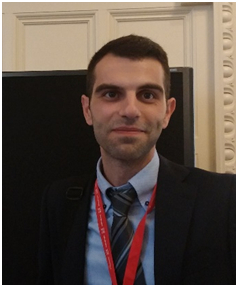 Alessio Monti (S’12-M’15) was born in Rome, Italy. He received the B.S. degree (summa cum laude) and the M.S. degree (summa cum laude) in electronic and ICT engineering both fromRoma Tre University, Rome, in 2008 and 2010, respectively. From 2011 to 2013, he attended the doctoral school in biomedical electronics, electromagnetics andtelecommunications engineering at RomaTre University. Currently, he is an assistant professor at Niccolò Cusano University, Rome, Italy, where he teaches courses on antenna and microwave theory.
Alessio Monti (S’12-M’15) was born in Rome, Italy. He received the B.S. degree (summa cum laude) and the M.S. degree (summa cum laude) in electronic and ICT engineering both fromRoma Tre University, Rome, in 2008 and 2010, respectively. From 2011 to 2013, he attended the doctoral school in biomedical electronics, electromagnetics andtelecommunications engineering at RomaTre University. Currently, he is an assistant professor at Niccolò Cusano University, Rome, Italy, where he teaches courses on antenna and microwave theory.
Dr. Monti is member of the secretarial office of the International Association “Metamorphose-VI”, and of the Editorial Board of the journal EPJ Applied Metamaterials. Since 2017, he has been appointed as Chairman of the Steering Committee of the International Congress on Artificial Materials for Novel Wave Phenomena - Metamaterials. He has also been member of the Technical Program Committee (TPC) of the IEEE International Symposium on Antennas and Propagation in the years 2016-2017 and of the International Congress on Advanced Electromagnetic Materials in Microwaves and Optics in the years 2014-2016. He has also been serving as a Technical Reviewer of many high-level international journals related to electromagneticfield theory, metamaterials and plasmonics and he been selected as one of the Top Reviewers by the Editorial Board of the IEEE Transactions on Antennas & Propagationfor several years.
His research interests include the design and the applications of microwave and optical artificially engineered materialsand metasurfaces, the design of cloaking devices for scattering cancellation at microwave and optical frequencies with a particular emphasis on their applications to the antenna theory.Dr. Monti has been the recipient of some national and international awards and recognitions for his achievements, including the 2nd place at the student paper competition of the conference Metamaterials’2012 and the Finmeccanica Group Innovation Award for young people in 2015.
SESSION 3 - Measurements on Metamaterials
Mirko Barbuto
Niccolò Cusano University, Italy
The term “metamaterial” refers to a wide range of artificially engineered materials, typically synthesized by arranging inclusion structures of particular shape and size in a host dielectric medium. The electromagnetic parameters and geometry of such inclusions are designed to change the response of the host material and obtain special properties that are not achievable by conventional materials at the frequencies of interest. In fact, since in such material the inclusions and the distance between them are reduced in size when compared with the operating wavelength, one can introduce effective permittivity, permeability and refractive index of the medium, which can assume anomalous values.
For some simple structures, the effective bulk medium properties can be found analytically. However, when the structures become more complicated, the complex interactions between the metamaterials components are difficult to predict and effective metamaterial properties should be determined through experiments or simulations.
In this tutorial, we discuss the different methods to infer the material properties from measured reflection and transmission coefficients at the metamaterial boundary. Moreover, as standard inversion methods suffer of ambiguities when applied to metamaterial samples, some techniques specifically conceived to avoid these issues will be presented.
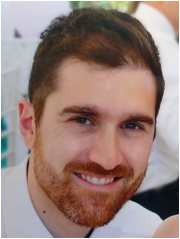 Mirko Barbuto was born in Rome, Italy, on April 26, 1986. He received the B.S., M.S. and Ph.D. degrees from “Roma Tre” University, Rome, Italy, in 2008, 2010 and 2015, respectively.
Mirko Barbuto was born in Rome, Italy, on April 26, 1986. He received the B.S., M.S. and Ph.D. degrees from “Roma Tre” University, Rome, Italy, in 2008, 2010 and 2015, respectively.
Since September 2013 he is with the “Niccolò Cusano” University, Rome, Italy, where he works as an Assistant Professor of electromagnetic field theory. His main research interests include metamaterial applications to microwave components and radiating elements, broadband metamaterials based on non-Foster circuits, miniaturized and multifunctional antennas, radiating elements generating EM fields with topological singularities.
He is member of the secretarial office of the International Association “Metamorphose-VI” and, since 2016, of the Technical Program Committee of the International Congress on Engineered Material Platforms for Novel Wave Phenomena (Metamaterials). He serves as a Technical Reviewer of the major international conferences and journals related to electromagnetic field theory and metamaterials and he has been recipient of the Outstanding Reviewers Award assigned by the Editorial Board of the IEEE Transactions on Antennas & Propagation for three consecutive years (2015-2017) and, in July 2017, he has received the same award by the Editorial Board of the IEEE Antennas and Wireless Propagation Letters. Since 2015, he is the Proceeding Editor for the annual International Congress on Engineered Material Platforms for Novel Wave Phenomena – Metamaterials. Currently, Dr. Barbuto is the author of more than 50 papers in international journals and conference proceedings.



